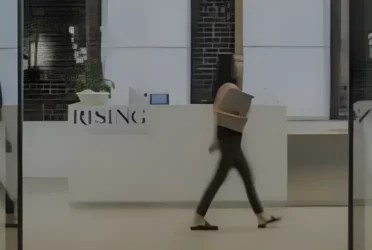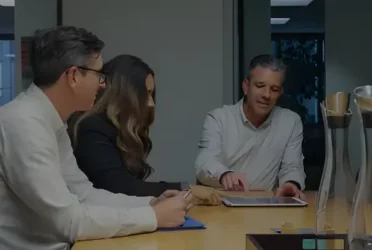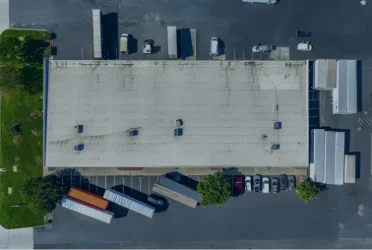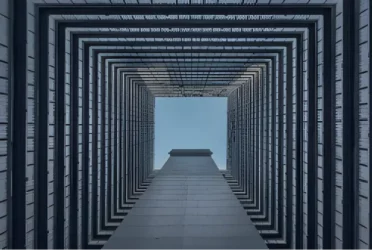The Real Market With Chris Rising – Ep. 48 Nelson Rising Part II

The Real Market With Chris Rising – Ep. 48 Nelson Rising Part II
Podcast: Play in new window | Download
Chris Rising (00:02): Welcome to The Real Market, with Chris Rising. The only podcast that brings the real estate conference panel to your headphones. You’ll hear from superstars from every realm of commercial real estate. The biggest brokers, the most well-known architects, the largest investors and the most visionary developers. Learn what they do, how they do it, and what drives their success. We’ll discuss the latest trends across regional markets and capital flows both national and global. And we’ll explore technology’s role in shaping all of it. We’ll take a clear-eyed look at where we’ve been, where we are now, and what’s to come. Real conversations. Real experts. Real insights. This is The Real Market.
Chris Rising (00:49): So, Dad, we’re back on another session here of the podcast, and we’ve spent a lot of time talking about your early career in real estate and your early career in politics, but we didn’t really get into where your interest in politics came from. What was it when you were in high school or in college that got you interested in politics and specifically Democratic politics?
Nelson Rising (01:22): Since I was a very young child, I was very interested in public policy. My parents were both conservative Republicans. And so I was seeing things from their perspective as I was growing up. And then when we got to a point where the two major issues were civil rights and the War in Vietnam is when my attitude towards political involvement became very, very, very intense.
Chris Rising (02:00): And when was that? Was that in college? Was that in law school?
Nelson Rising (02:06): Both. And I spent two summers at Quantico, Virginia in the United States Marine Corps Officers Training Program. And looking at the Vietnam War, it just made no sense. It was a question of old men’s pride and young men’s lives. And so I was really very much involved in that. And of course the Civil Rights Movement. Seeing how non-white Americans were treated. And I found that to be very offensive.
Chris Rising (02:41): So you were in law school in the middle sixties, so this was before the Burn the Draft Cards and all of that.
Nelson Rising (02:48): Yeah.
Chris Rising (02:48): Because they hadn’t decided yet whether there was going to be a draft or reserves. They were working with just the current military at the time. But was there anything that got… When you were doing your Officers Training in Quantico and then you were playing football and then football ended, and then you became a more serious student. Was there anything that you got involved politically while in college or in law school that really set a career path for you in your involvement in politics?
Nelson Rising (03:17): Well, from the standpoint of what really triggered my interest was a history class at UCLA. And I was really focused on U.S. history. And I did very well in the class and read everything I could read. And so a combination of those things kind of moved me to where I went.
Chris Rising (03:44): And then what was your first involvement in a political campaign?
Nelson Rising (03:51): Well, it was quite… Well, what happened was we had something called the Committee for California. It was clear when Pat Brown was beaten by Ronald Reagan that there had to be a change. The traditional Democratic Party wasn’t working. And so therefore Warren Christopher and others formed a group called the Committee for California. At that point I was a senior in law school. And I’d been a summer clerk at O’Melveny & Myers between my second and third year. And lo, and behold, here I get invited by Warren Christopher to come to the first meeting of the Committee for California. And which I thought was a staggering honor. And not only was I invited to that meeting, but I was put in charge of the Speakers Bureau. And the first speaker we invited was John Tunney.
Chris Rising (04:54): Who was a Congressman from San Bernardino then.
Nelson Rising (04:56): Riverside, San Bernardino, and Imperial Counties. And so it was at a time when, again, as I mentioned earlier, it’s the Civil Rights and the War in Vietnam. And so that’s what motivated me.
Chris Rising (05:12): So from the Committee in California, what was the first campaign you worked on?
Nelson Rising (05:16): Bobby Kennedy’s campaign, he came in late and when Johnson decided not to run again. And so Bobby was just a natural candidate. He was great. And I was involved in that campaign and I was responsible for doing the downtown motorcade in Los Angeles.
Chris Rising (06:00): You were 26 years old?
Nelson Rising (06:02): Yeah. Yes. And so I was sitting there on the floor of the ambassador hotel bungalow, and the advance man Jerry Bruno for Jack Kennedy was Bobby’s advance man. And he had just lost in Oregon. This was on a Thursday morning. And they were very concerned about the downtown motorcade that we had put together. And so they said, “Well, who’s doing it?” And Jerry Bruno said, “Nelson Rising.” And, “Who’s he?”
Chris Rising (06:42): Bobby Kennedy said, “Who’s he?”
Nelson Rising (06:44): No. No. It was Larry O’Brien.
Chris Rising (06:46): Oh, Larry O’Brien. Yes.
Nelson Rising (06:47): Yeah, “Who’s he?” And he said it was a young lawyer from O’Melveny & Myers. And I said, “I tell you, it cannot fail. I have so many people in this town, young lawyers who care about the War in Vietnam, who care about Civil Rights, it’ll be the best.”
Chris Rising (07:10): And so tell us about the parade here in downtown Los Angeles.
Nelson Rising (07:15): Well, this was the old days. So Bobby’s in an open convertible. And the only security he has is a retired FBI person without a gun.
Chris Rising (07:30): Wow.
Nelson Rising (07:31): And so Rosey and Rafer were holding him up as he went through downtown.
Chris Rising (07:36): So Rosey Grier.
Nelson Rising (07:37): Rosey Grier and Rafer Johnson.
Chris Rising (07:39): And Rafer Johnson. So Rosey Grier was the star defensive lineman for the Rams, and Rafer Johnson was the Olympic decathlete gold medalist.
Nelson Rising (07:47): Yes, that’s right.
Chris Rising (07:48): Both who were African-American.
Nelson Rising (07:49): Mm-hmm (affirmative). Both of… Yes. And I knew Rafer because I had a locker for rugby next to his locker in the sports locker room. So Rafer and I got to know each other through that experience. But it was an extraordinary day. And we went up Broadway. And we had busloads of people coming in from senior citizens homes and whatever. It was just unbelievable.
Chris Rising (08:25): Had Bobby Kennedy achieved his rock star status at that point?
Nelson Rising (08:29): Yes.
Chris Rising (08:30): So people were following him and…
Nelson Rising (08:31): Oh, yeah, yes. So then we had election night. And I was over at the Ambassador Hotel, and a group of us were invited to go to back to Chicago and work the convention. And we were standing ten feet away from the kitchen door. And Bobby went through there and next thing I knew, pop, pop, pop.
Chris Rising (09:02): And then the doors opened and you saw… What did you see happening?
Nelson Rising (09:08): Oh, I saw him walk into the room and heard pop, pop, pop.
Chris Rising (09:11): Yeah. Unbelievable.
Nelson Rising (09:13): And then he was… It took us… We were there until 4:00 in the morning before they could get everything all shut down. And it was just disaster. It just changed everything in my life at that point. So that was a very memorable day for all the wrong reasons.
Chris Rising (09:35): Yeah. And so then we talked earlier about how you got into the Tunney campaign, but before we fast forward it, let me just ask you a little bit about a lot of your history has been in California. You’ve done projects all over the country, but a lot of it has been here. You talked a little about my grandparents and your parents being conservative Republicans, but how did you come to California and what age and why?
Nelson Rising (10:04): Well, my father was building superintendent for major hotels. He started that career because he was in the Navy in World War I. He was born in 1898. And he was below deck and doing all the things one does on a major naval vessel which is just what one does in a major hotel. And so he transferred from being on a floating platform to stationary engineer. And so he was working at the New York Statler. I was born in Queens in 1941. And we moved from there to Cleveland where he went to the Cleveland Statler for six months. And from there, we moved to the Washington, D.C. at the Statler Hotel which is now the Capitol Hilton. And so we were there. And then he was transferred out to Los Angeles to be the stationary engineer, chief engineer for the Statler Hotel in Los Angeles. And that was in 1951.
Chris Rising (11:19): Wow. And then you grew up… What part of Los Angeles did you guys move to?
Nelson Rising (11:25): Glendale.
Chris Rising (11:26): So you were in Glendale from 1951 through going to college or…
Nelson Rising (11:29): Yeah. Yes.
Chris Rising (11:33): Yeah.
Nelson Rising (11:33): Yeah. We were in Glendale. I went to UCLA on a football scholarship in 1959. And I was at UCLA ’59 to ’63. And I played football in ’59 and ’60. At that point, I had a great freshman year, and we were the only UCLA team to beat USC twice in one season. Course we were the only team that played SC twice in one season, their freshman team. And I went to Quantico. I showed up at Quantico, Virginia, I weighed 232 pounds of blue, twisted steel. I came back at 203 pounds.
Chris Rising (12:24): Wow.
Nelson Rising (12:24): Because of the humidity and the heat and the training. And Coach Barnes if you saw that, he said, “We don’t have any 203 pound tackles. We’re going to red shirt you.” And so one of the things in those days, single platoon, if they got one player to take out all eleven, so they encouraged us to play rugby to be in condition. So I played rugby through my freshman, sophomore, junior, and senior year. And we were the first UCLA rugby team to beat Cal since World War II. Everybody in the scrum was a football scholarship athlete, including one who was a first round draft choice by the bears. It was quite a thing. And so I really enjoyed rugby. Played my last rugby game at 35, which was not a sign of intelligence.
Chris Rising (13:14): Let’s talk a little bit about your days in the… We talked about you doing the real estate in Florida with Miles Ruben and Carl Rosen and with Bob Ginsberg. But somewhere around the early eighties, you decided that flying to Florida was taking its toll and that there might be opportunities here in Los Angeles. And you talked about having lunch with Rob Maguire. Can you talk a little bit about the deal that brought you to be partners with Rob Maguire and Jim Thomas and what your initial role was?
Nelson Rising (13:44): Well, Rob Maguire had been a very good developer with Jim Thomas. Jim was his lawyer. They became Maguire Thomas. And Rob tried to get Cal Plaza. And he didn’t get it.
Chris Rising (14:03): And that was a CRA, community redevelopment RFP. I believe it went to Cadillac Fairview.
Nelson Rising (14:12): Cadillac Fairview was chosen.
Chris Rising (14:14): Canadian developer.
Nelson Rising (14:15): Yes. And Rob was very unhappy about not being chosen. And so he then wanted to do something else downtown. I had been chairman of Tom Bradley’s campaign for mayor. I knew Tom has a result of that. I chaired his campaigns. And I knew everybody in the CRA in the city network. And so I was brought on to be the partner in charge of the library tower project. And downtown Los Angeles, the FAR, floor area ratio is six to one. But you can transfer the air rights from an adjacent site. So we transferred the air rights off of Central Library, for which we paid them fifteen dollars a foot. And then transferred them over to the Library Tower site and the Gas Company site. And we went to thirteen to one on the Library Square site, and to eleven to one on the Gas Company site.
Chris Rising (15:29): So those sites are on 5th Street between Flower and Grand and then Grand and Olive for the Gas Company. They were great sites at the base of Bunker Hill. Outside of the fact that trying to get more density was key, what were the challenges that you faced outside of density in trying to get those in title?
Nelson Rising (15:54): Tenants. There was an article on the front page of the L.A. Times on a Sunday that said there was the vacancy rate in downtown was very high, but the vacancy, there was no space over 25,000 square feet. And that was the seam in the zone defense that gave the opportunity. So we went out after large tenants. And so, for example, Library Tower, we broke ground 85 percent pre-leased. We had Pacific Enterprises who also owned the Gas Company. We had Arthur Andersen, Latham & Watkins, and a whole series of other tenants that we moved from Maguire buildings into the Library Tower. The Gas Company was owned by Pacific Enterprises and Dick Farman who was the head of the Gas Company agreed to go to Library Tower. But he called me one day and said, “Nelson, you got to clean up Pershing Square.”
Chris Rising (17:09): So, Dad, when Rob brought you in as a partner, they owned what was then called I think Crocker’s Center, which we know today is Brookfields Project is Wells Fargo. They had two towers. They lost to Cadillac Fairview on the RFP for Cal Plaza One and Cal Plaza Two. Your initial role, did you come right in and start focusing on a project or were you involved in leasing? How did your relationship with Rob and Jim start in your role? Were you doing leasing while you were pursuing a project and tell what was happening in 1984 in downtown L.A. at that time.
Nelson Rising (17:54): Well, I was brought in to basically obtain the entitlements for the Library Tower.
Chris Rising (18:02): Library Tower today, we know what that is. It’s tallest tower west of the Mississippi, now called U.S. Bank Tower. But at the time it was a site that was owned by Rob and what was on it.
Nelson Rising (18:12): And John Cushman.
Chris Rising (18:14): And John Cushman.
Nelson Rising (18:15): Yep.
Chris Rising (18:16): What was the site? Was it just raw land or…
Nelson Rising (18:19): It was a hill. It was a hillside. The ending part of… The southern part of Bunker Hill. And it looked pretty complicated. We were able to hire an I.M. Pei firm in New York, although I.M. Pei was not the designer of Library Tower. It was Harry Cobb who was at one point a dean of the School of Architecture from Harvard. And so that was the beginning of it.
Chris Rising (18:53): Did you dream of a 72 story tower and say, “We got to figure out how we get the entitlement?” Or what happened that gave the opportunity to get the bigger entitlement?
Nelson Rising (19:03): Well, again, it was understanding the density transfer provisions that we have in the redevelopment agency.
Chris Rising (19:10): But you bought them from the library. Why was the library willing to sell entitlement rights to you?
Nelson Rising (19:15): Well, because we paid them. And we also agreed to give the tax increase portion to them. So the Central Library had had a fire, and the funds from that restored the Central Library.
Chris Rising (19:36): So the project included doing the corner of Grand and 5th as well as providing the funds to redo the Central Library after the fire and build a parking garage which now is where Maguire Garden sits.
Nelson Rising (19:51): Right.
Chris Rising (19:52): And so when you came to be partners with Rob and Jim, it was your responsibility to deal with the library, the city, to get to where you could build a 72 stories tower.
Nelson Rising (20:02): Yeah, and to deal with getting tenants. And we broke ground after reading the day before on Sunday the L.A. times saying that the vacancy rate in downtown was quite high. But there was no space over 25,000 square feet. So we were able to not only raise the capital to start construction, but we could only do that because we had it 85 percent pre-leased. Latham & Watkins, Arthur Andersen, Pacific Enterprises. And two floors of tenants from another Maguire building.
Chris Rising (20:50): So the design is an iconic design. It’s the tallest building west of the Mississippi. But what challenges does a design that wedding cakes up and gets smaller floor plates, how did you figure out a tenant mix that might work on the larger floor plates of the 54 stories in lower and then the smaller floor plates that are more iconic above that.
Nelson Rising (21:11): Well, there were certain tenants who wanted to be high in a smaller space. So the floor plates were 25,000 basically square feet. And it kind of slimmed down as you went up higher. And what made the whole thing work was a combination of great architects, Turner Construction did a great job and the architecture was fabulous. And with that, we ended up being pre-leased.
Chris Rising (21:45): And I know at one point there was a big debate about the crown and whether your large tenant First Interstate Bank was going to be able to move there because of their concern about signage. Can you talk a little bit about the first real signage battle in downtown Los Angeles in the early eighties?
Nelson Rising (22:02): Well, there was a time when they didn’t want building top signage.
Chris Rising (22:06): The city did not.
Nelson Rising (22:07): The city did not. Yeah. That’s changed. But so we convinced them to go up there without building top signage.
Chris Rising (22:18): And then ultimately you spent time and you and the Maguire Thomas team were able to get approved for a gold First Interstate logo.
Nelson Rising (22:29): Yes.
Chris Rising (22:29): Is that correct?
Nelson Rising (22:29): Yes.
Chris Rising (22:31): And was that something that was part of the deal or that’s something that came after?
Nelson Rising (22:37): Well, it’s an interesting story about that. I was with the real estate person from First Interstate and at one of Maguire’s buildings downtown, Crocker Center. And all of a sudden, a fire broke out at First Interstate.
Chris Rising (23:01): Which is now known as Aon Tower.
Nelson Rising (23:03): Aon Tower. So we walked outside and it was unbelievable. It seemed to just, the whole building, kind of melt. And the end result was that First Interstate needed a home. And so we conveniently gave them one.
Chris Rising (23:22): Well, and there was a lot of other ramifications. It changed the fire code laws in Los Angeles. It created the sprinkler ordinance. But the beneficiary was that First Interstate decided they needed to be in a new building.
Nelson Rising (23:34): Yeah, that’s correct.
Chris Rising (23:37): Yeah. And when you looked at all of the things that you were working on at that time, you’ve got library tower going, but next door, across the street I mean, on the corner of… That’s the northeast corner of 5th and Grand, you had another piece of property, Maguire Thomas did that was also on an odd angle. What was the timing? I believe you topped out on Library Tower somewhere ’87, 88. And then did you get that done and then start on Gas Company tower or what was the play there between those? Because that’s probably like 3 million square feet, maybe a little bit more that you added to the market within a couple year period. That was dramatic for downtown Los Angeles.
Nelson Rising (24:26): Well, what made it possible was that First Interstate Bank went to Library Tower but that Pacific Enterprises owned the Gas Company.
Chris Rising (24:38): And the Gas Company needed a home? Nelson Rising (24:40): Needed a home. And then when we talked with Dick Farman who later become chairman, my chairman at Catellus. And Dick Farman, wonderful man. And we were able to… And I think and the architect there did a wonderful job.
Chris Rising (25:04): That was Rick Keating.
Nelson Rising (25:04): Rick Keating.
Chris Rising (25:05): Yeah.
Nelson Rising (25:06): Rob wanted to do a Back to the Future Philip Johnson building. And Dick Farman called me and said, “Nelson, tell Rob we’re changing the image of the Gas Company. We want to look modern.” That’s why Keating came in. And he did a magnificent job.
Chris Rising (25:28): Which are the most efficient floor plates in Los Angeles, I think. And if I remember correctly, it was also the first building in downtown Los Angeles to have raised flooring because cabling became important at that point.
Nelson Rising (25:41): Yeah. Yes.
Chris Rising (25:42): And so it was a costly thing to move around furniture if you didn’t do the cabling, having to redo the cabling, so Rick and the team came up with this raised flooring idea.
Nelson Rising (25:52): Yes, that’s correct. And so we had the Gas Company in, and then we had several other firms to stack on top of them. But it was…
Chris Rising (26:03): But I think they were half a million square feet. They were almost half the building when the gas company came in.
Nelson Rising (26:07): Yes, that’s correct.
Chris Rising (26:09): So I think a lot of people know… Or at least it’s not hard to look at the downtown skyline and say your partnership with Rob and Jim and there were other people at that firm and I think that’s a unbelievable legacy of real estate leaders. Can you talk about some of your other partners that you worked with during that period? Nelson Rising (26:29): Well, Rick Gilchrist was a very, very strong partner. He was a lawyer and was working for the firm on various leasing issues and so forth. And Rich Gilchrist, leader of the Irvine Company, he was really an outstanding person. Ned Fox was there and he did a great job. He’s been developing in the Redondo Beach area. Chris Rising (26:58): He also was responsible for starting [Erite 00:27:01] and…
Nelson Rising (27:02): Yeah, yes.
Chris Rising (27:04): And then he had another partner who passed away but was very important [Kim Kenna 00:27:09].
Nelson Rising (27:09): Yes. Yes.
Chris Rising (27:10): And then you also have the leadership there produced the Belichick coaching tree there. There are quite a few stars in the business now who are a little bit older than I am and a little bit younger than you, but everybody from Mike Croft and Brett Munger at the Commonwealth and Ed Cook and Tom McCarthy at McCarthy Cook. There were some real stars that came out of that. And really pretty amazing group of talent.
Nelson Rising (27:41): There were. There were. And one of my great satisfactions was being able to mentor these guys when they came in. And they were all talented. And whatever I could have done to help them when they moved off from the firm was really worthwhile.
Chris Rising (28:01): So during that time at Maguire Thomas Partners, you not only had the two major projects in downtown L.A., but you had a couple of other projects. You had one in Pasadena called Plaza Las Fuentes and then maybe we’ll move into Playa Vista because that’s a long conversation. But let’s talk about this project that was really one of the larger projects in Pasadena done in the eighties, Plaza Las Fuentes. Can you tell us a little bit about that site and…
Nelson Rising (28:28): This was a site that was owned by Cushman and Rob. And they came in with the idea of building a high rise in Pasadena. Bill Bogaard was the city council and his wife was absolutely committed to keeping Old Town, Old Town.
Chris Rising (28:53): And to give a little context to that, Parsons had come in and built a very early eighties more of a Texas theme campus and in doing so tore down a lot of Old Town and there was then a lot of pushback about new development. So Bill was on the city council. You were lawyers together at one point in your career.
Nelson Rising (29:17): Well, he was a year ahead of me at O’Melveny. And my cubicle was across the hall from his cubicle. And Bill had gone to Michigan Law School, a wonderful man.
Chris Rising (29:30): Legendary mayor for multiple terms in Pasadena.
Nelson Rising (29:33): Multiple terms.
Chris Rising (29:33): He just retired recently.
Nelson Rising (29:35): He was America’s Best Mayor for a lot of years.
Chris Rising (29:37): And his wife Claire really founded the Heritage Society of Pasadena. Heritage. Has been very much involved in Pasadena in entitlement development. And I think there was a lot of developers who were quite frustrated with all the things they did. But somehow you and Claire and Bill worked together to get something entitled that actually was then quite an amazing project. So let’s talk a little bit about it.
Nelson Rising (30:02): What we tried to do with the messaging of Las Fuentes was to design a building that was compatible with the architecture. We were right near City Hall, and the city council in Pasadena would have meetings that would go on for hours and hours. So you start up at 7:00 and you’re there until 10:00 or 11:00. And they were focused on preserving what was great about Old Town Pasadena. We had a twelve story hotel. We had retail, restaurants, office. And there’s still tenants in that building that I put in there.
Chris Rising (30:54): Yeah. Now East West Bank owns one of the towers, the office towers. There’s Western Asset Management for Plaza Las Fuentes too. But that was a lot of nights I remember because I was in high school of you being at the Pasadena city council meetings and listening to a lot of people with a lot of opinions.
Nelson Rising (31:16): Yeah.
Chris Rising (31:17): Obviously you had a great team, Rob and Jim and Ned and Rick and yourself in the team, everybody worked well together. But there’s lots of ups and downs on the entitlement front. So how did you deal with all the different pressures when you had your partners meeting every week, and they looked at you and said, “Nelson, why isn’t this done yet?”
Nelson Rising (31:38): I said, “Be patient. It’ll be done.” Chris Rising (31:41): Did you see the need for office space and hotel in Pasadena that was a driver because economics usually drives these things?
Nelson Rising (31:47): Yes, there was a real need for that. And like I say, we were very farsighted, but with the goal line now, Pasadena is a great market because more affordable housing is further out. And so as a result, people could work in Pasadena because they could live someplace else they could afford. And that was a big factor.
Chris Rising (32:17): Terrific. So the other major project which is now well known around the globe today was this piece of property out in what was then Westchester but not Westchester. It was kind of Marina Del Rey, but it wasn’t quite Marina Del Rey, and it was owned by a rather eccentric person and it was the Howard Hughes property that ultimately was owned by the company that came after him, Summa. Tell us a little about… Today everybody thinks it just happened. Maybe we can go back to 19 I think 91 when Rob and Jim said to you and the other partners, “We have an idea for a project.”
Nelson Rising (32:58): Yes. And I said, “You know, that’s going to be very tough to get entitled.” And they said, “Well, you’re going to do it.” And so I, unlike Summa, I did not come up in there and said, “It’s our property. We’re going to do it.” And Ruth Galanter had just beaten Pat Russell based on Playa Vista.
Chris Rising (33:23): Stopping Playa Vista. Not going to happen.
Nelson Rising (33:25): Stopping Playa Vista. And she said, “Isn’t going to happen.” I sat down with Ruth and said, “Look, I am going to prove to you this is going to be in everybody’s best interest to do what we’re going to do.” We put together a great planning team. Johnson Fain was fabulous as far as the planning. And other major architectural input. Chris Rising (33:52): He put together quite the team of architects. Stefanos Polyzoides worked on that. Really people who defined what new urbanism would become.
Nelson Rising (34:01): Exactly right.
Chris Rising (34:02): When you look at the historic photos of Playa Vista, you had wetlands there. This really was areas where there were endangered species. You had the end of a freeway. You had LMU up on the hill. You had the Summa headquarters that was built into the hill. But when one looked at it, you said, “Boy, if we’re going to have a big major public park on the West side of Los Angeles, this is probably where it should be.” So you had a lot of people in favor of that. Why did you take on the role?
Nelson Rising (34:36): Well, I thought I could get it approved. And I can’t tell you the number of meetings I had. I met with every major homeowners group, listened to them. What do you want and why do you want it. And this is what I want and why I want it, let’s get the yes. And so I had I can’t tell you the number of meetings. And I would be there and describe to them that this was going to be a place of multifamily housing. Now the people who lived in Westchester visualized multifamily housing as these crappy little buildings built along the thoroughfare.
Chris Rising (35:23): Yeah, along the 101 freeway. That kind of…
Nelson Rising (35:25): Exactly. Exactly.
Chris Rising (35:25): The stuff that now is all having to be retrofitted because it was the tucked under garage and parking spaces.
Nelson Rising (35:33): Exactly. So what we did was I had put together two slide decks.
Chris Rising (35:37): This was technology early on.
Nelson Rising (35:40): Early on.
Chris Rising (35:41): We had the multiple slide machines going.
Nelson Rising (35:44): Yeah, and so here I am holding a microphone and a laser pointer. No. Holding the microphone and the clicker to work those slide machines. And then a laser pointer. And so I would say, “Okay, when I’m saying multifamily housing,” flash, “This is what you think I’m talking about. This is not what I’m talking about.” And then the slide deck, old town Charleston, old town Savannah, Georgetown. And great apartments that were built in the 20s in Mid Wilshire. And one by one, I brought people along. And then we went through all the elements of the project. And the EIR was five feet, seven inches thick and multiple volumes.
Chris Rising (36:42): Well, when Ruth Galanter said she wanted a bullet proof EIR, I guess pretty hard to put a bullet through that.
Nelson Rising (36:48): That’s what I told her. I had it lined up in my office by the property, and I said, “Ruth, this is a bullet proof EIR. Literally and figuratively.”
Chris Rising (36:58): I mean, I think it’s easy now because we see all the way the West Side has evolved over the last 15, 20 years. But at the time, we didn’t have the technology on databases on what demand was going to be. I think it was a pretty good bet that people would want to live there so multifamily made sense, but it was a real stretch to think any office or retail was going to work. So what was the technology for putting together market studies? How did you figure out what that product mix was going to be?
Nelson Rising (37:30): Well, I remember one night I was being kind of booed when I first started the talk by the people in Westchester Bluffs. And I said to them that… I gave all the demographics of what was going to happen around them. And that to have a mixed use project, truly mixed use, office, retail, restaurants, parks… We had another challenge. There was an Indian burial ground.
Chris Rising (38:04): A native American burial ground there. Wow. Nelson Rising (38:06): Yes. Yeah. And so what was… I met with all the leaders, the tribal leaders, and we had a great relationship and when they came around to support us, they invited me for one of their town meetings with the tribal leaders. And they gave me a standing ovation.
Chris Rising (38:34): Amazing. When you look at what was proposed at the time, there was term called new urbanism. What did that mean to you then and how has it played out in your mind today?
Nelson Rising (38:49): The way I presented it to the community is we’re going to build a place where you want to live. You’ll park your car on Friday night and not get back into it until Monday morning. We’re going to have a completely self-contained environment. There’ll be parks. There’ll be food and beverage, and there’ll be doctors offices and so forth. And that’s what we did.
Chris Rising (39:14): It was a new concept though because the Los Angeles of the fifties through eighties was really a bunch of different single purpose uses. You went shopping over here, you lived over here, and you worked over here. It was not a Los Angeles that really thought about getting out of their car. So that must have been hard to get people to see a vision like that because it was foreign to what everybody’s experience had been.
Nelson Rising (39:39): Well, it was foreign to what people had experienced previously. But I held all these meetings and let people get up and yell and scream and a lot of that and a lot of motion and so forth. And I always stayed calm and said, “Well, you know, I appreciate your question, and this is my answer.” And it was really an extraordinary process. And I know you were at some of those meetings.
Chris Rising (40:12): I was in fact. There’s a couple other things that happened during that time, but I remember, one, a gentleman who I know is still around and he was very passionate in his being against the project and would almost every meeting let you know in very explicit terms and you never lost your cool. Sometimes he had to be escorted off. I’ll leave his name out of it. But then there was also a little problem with an endangered species.
Nelson Rising (40:40): Yes.
Chris Rising (40:41): I think most people think of a red fox and they think of the Robin Hood character in a Disney movie. But tell us a little bit about the red fox issue.
Nelson Rising (40:52): There were two endangered species on the wetlands. And they were red fox. So Ruth… Chris Rising (41:03): Red fox are natural to Southern California?
Nelson Rising (41:06): No, they’re not. But they were somehow there was a courier there that lost his lease and during the fight left the foxes out. Chris Rising (41:21): Unbelievable. And what did the foxes do to the habitat at Ballona Wetlands?
Nelson Rising (41:28): They were killing endangered species.
Chris Rising (41:31): Unbelievable.
Nelson Rising (41:31): And so Ruth said, “Nelson, you’ve got to stop this.”
Chris Rising (41:35): And they weren’t from your property?
Nelson Rising (41:37): No.
Chris Rising (41:39): In fact, I remember on the other side of the airport, and they came through the airport. Nelson Rising (41:41): No. Chris Rising (41:42): And then came down into Ballona Wetlands.
Nelson Rising (41:44): Yes, and so she said, “Nelson, you got a problem here. You’ve got to prevent these animals.” So the fox, the red foxes. So I got on the phone and called various zoos and one by one they said, “Look, a fox is a rat that’s bigger.” Chris Rising (42:09): And a long tail.
Nelson Rising (42:12): And a long tail. So we don’t want any foxes. We were able to get one to a zoo in Idaho. The rest of them said, “No, we don’t want these people.” And “capture and euthanize.”
Chris Rising (42:24): There was quite a bit of protest I remember and even some violence around the whole thing.
Nelson Rising (42:32): Well, indeed. There was somebody there who was very support. And there was a bullet hole through my window.
Chris Rising (42:38): And I believe Ruth Galanter was threatened. Her life was threatened. Someone went to jail.
Nelson Rising (42:43): Yeah. Yeah. So anyway, so that was a motion for running wild, but the end result was we were able to capture and euthanize the foxes whose life would not be worth anything to speak of because there was nothing else for them to do beside eat each other there. And but it was a question then of people letting their emotions get in their way. And me, my role, was to be calm and never once get in an argument. And just express my view. And would leave, and say, “Well, that’s your view. This is my view. Let’s keep a dialogue.”
Chris Rising (43:28): So ultimately the EIR gets completed and then it goes to a vote at the city council. How did that go?
Nelson Rising (43:35): It was a combination city and county. Chris Rising (43:41): Just to make a little harder. Just to make it just a tad bit harder. It couldn’t just be the city.
Nelson Rising (43:46): Yeah, because part of it’s in county. And so we unanimous approval at the city. And we got all but one vote on the board of supervisors.
Chris Rising (43:55): Interesting. So the Playa Vista that has been built out today is different than it was originally approved. A person we work with, David Herbst who started with you and carried your slide decks often says, “I think unfortunately there was a change from what was originally approved.” Still the same concept of new urbanism, but what were some of the elements that you think are lost today at Playa Vista that were in the original entitlement?
Nelson Rising (44:24): Well, it’s interesting. As this plays out, I’m on the board of the Irvine Company. I know Robert very well. Donald very well. And that he decided to buy the last 550 apartment sites. Chris Rising (44:43): At Playa Vista.
Nelson Rising (44:44): At Playa Vista. And built them all at one time. And the biggest problem they had is, “How do we get the workers?” And but it’s the community that I advertised. And it’s one of the most popular living places on the West Side.
Chris Rising (45:03): Yeah.
Nelson Rising (45:03): People love it. Park your car Friday. Leave it on Monday.
Chris Rising (45:08): That’s exactly right. And you’ve got retail right there. Lincoln Property ended up coming in and doing a great job on the runway. Lots of the apartment developers and the condo developers did great things. It took a long time in the sense that we had a recession or two in there and we had a change. At one point after you had left and gone to Catellus, Rob almost did his deal with Steven Spielberg and their new studio where they were going to put in a lake and do a movie studio. But ultimately the partners in that got together and Steve Soboroff was involved and got it over the finish line at the end. But what it is today in your view is pretty much what was… As close as you hoped it could be to what was approved when you were doing it.
Nelson Rising (45:55): Yeah. Yeah, exactly right. And we have every possible entitlement obstacle you could have.
Chris Rising (46:05): And people, this is a good chance for us to talk about doing entitlement in the state of California. We get ridiculed not only around the country but around the globe about how difficult it is to get things done. That projects that should take in people’s minds take five years.
Nelson Rising (46:25): One of the things I said to the community, “Entitlement in California is not rocket science. It’s much more complicated than that.”
Chris Rising (46:35): And you’ve been able to manage it with some of the biggest projects in the state of California and we’re going to talk about Mission Bay and your days at Catellus in our next podcast, but can you just give your thoughts on the pros and cons of what entitlement in California has. There’s got to be some pros for people living here that there are some good things about a difficult entitlement process in producing a better project, but then there’s also lots of cons. So what’s your view of entitling in California?
Nelson Rising (47:06): I think it’s something, given the population we have in California, that we have to have a rational entitlement process. By that it means that it’s not it’s my land I’ll build what I want. We can’t have it that way. You have to look at all the various constituencies and all the people who will be affected and try to work out a balance between the interests. And for years, I’ve done this in Texas, I’ve done this in other places. And that if you understand what the opponents want and why they want it, and then I tell them what I want and why I want it, you can get the yes.
Chris Rising (47:58): Terrific. Well, I think that is a good place to stop. We got you through the end of your time with Rob and Jim. It really was an amazing eleven years that you spent there and they did some amazing things. There were ups and downs and recessions and Stay Alive Til 95. All those kind of things. But they were some, for me, since I was in high school and college for a lot of them, it was a very engaging thing to watch having the skyline change when I was at Loyola High School watching that tower go up. And then living in Manhattan Beach and getting the privilege I guess of being threatened by the animal activists because they saw my name in a phone book. But that all really laid the basis for what you did next and so I’m looking forward to our next podcast where we can



 Our Company
Our Company Our Team
Our Team Portfolio
Portfolio Services
Services News
News Insights
Insights Videos
Videos Podcast
Podcast